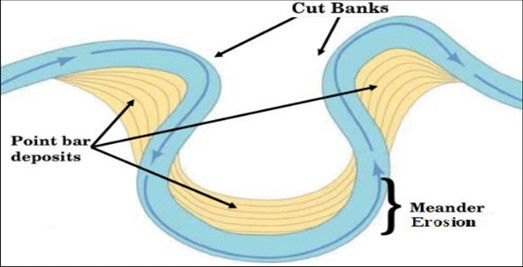- Filter By :
- Geography
- History
- Indian Heritage & Culture
- Indian Society
-
Q. Discuss the role of tectonic activities in shaping landforms. How do erosion and deposition contribute to the formation of various geomorphic features? (250 Words)
15 Apr, 2024 GS Paper 1 GeographyApproach
- Start the answer by introducing tectonic activities.
- Illustrate the role of tectonic activities in shaping landforms.
- Evaluate how erosion and deposition contribute to the formation of various geomorphic features.
- Conclude suitably.
Introduction
Tectonic activities, driven by the movement of Earth's lithospheric plates, play a pivotal role in shaping landforms across the globe. These processes encompass a range of geological phenomena, including earthquakes, volcanic eruptions, and the formation of mountain ranges.
Body
Tectonic Activities and Landform Shaping:
- Plate Tectonics:
- The Earth's lithosphere is divided into several large plates that float on the semi-fluid asthenosphere beneath them.
- The movement of these plates, driven by processes like mantle convection, leads to tectonic activities such as subduction, collision, and divergence.
- Mountain Building:
- Convergent plate boundaries, where plates collide, result in the formation of mountain ranges.
- For instance, the Himalayas, the world's highest mountain range, are a result of the ongoing collision between the Indian and Eurasian plates.
- Rift Valleys:
- Divergent plate boundaries, where plates move apart, create rift valleys. The East African Rift System is a prominent example, where the African Plate is splitting into smaller plates, leading to the formation of rift valleys like the Great Rift Valley.
Erosion and Deposition Processes:
- Weathering:
- Weathering, the breakdown of rocks at or near the Earth's surface, is a fundamental process in geomorphology.
- Mechanical and chemical weathering weaken rocks, facilitating their erosion.
- Erosion:
- Erosion involves the removal of weathered rock material by agents such as water, wind, ice, and gravity.
- Rivers, glaciers, wind, and waves are major erosional forces that shape landscapes over time.
- Deposition:
- Deposition occurs when eroded material is transported and deposited in new locations.
- Sedimentary rocks, formed from the accumulation and compaction of deposited sediments, bear testimony to these processes.
Formation of Geomorphic Features:
- River Valleys and Floodplains:
- Rivers erode their channels over time, forming valleys, meanders, canyons, and floodplains.
- Deposition of sediment during floods contributes to the formation of fertile floodplains such as point bars, essential for agriculture.
- Coastal Landforms:
- Coastal erosion and deposition sculpt diverse landforms such as beaches, cliffs, spits, and estuaries.
- For example, the erosive action of waves and currents creates sea stacks and arches along coastlines.
- Glacial Landforms:
- Glaciers, powerful agents of erosion, carve distinct landforms like cirques, U-shaped valleys, and moraines.
- The retreat of glaciers leaves behind characteristic features that provide valuable insights into past climatic conditions.
- Karst Topography:
- Karst landscapes, characterized by limestone dissolution and the formation of caves, sinkholes, and underground drainage systems, result from chemical weathering processes.
Conclusion
Tectonic activities, erosion, and deposition are interconnected processes that shape Earth's surface over geological timescales. From towering mountain ranges to meandering river valleys, the dynamic interplay of these forces gives rise to the diverse geomorphic features that define our planet's landscapes.
To get PDF version, Please click on "Print PDF" button.
Print PDF






